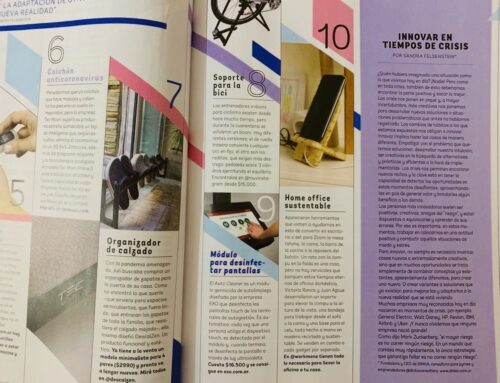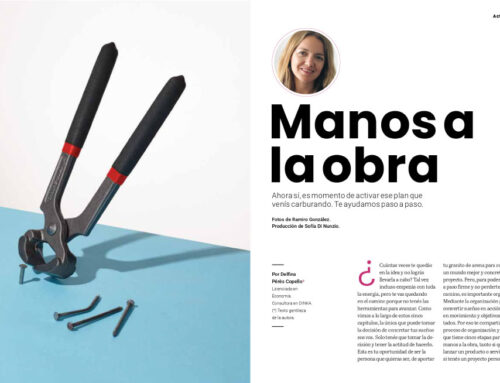You once thought about the difference between the verbs "teach" and "learn"? "Teach" comes from Latin in (en) and sign with (point to) and "learn", from to take hold of, which means "take for the senses", "acquire knowledge." Look that the first verb is passive and the second, active. However, if we take the educational model as an example, we can see that most public or private institutions continue to maintain the most passive learning model, with a teacher in the center of the class and several desks pointing towards him and towards the board. This model focuses on the answers, on memorizing or learning the content that is designated and not on what really matters, that are the questions. Now, in large companies, those that stand out for being innovative and go one step further than the rest, such as Google or Amazon, however, the common thing is to meet circular tables, with multidisciplinary equipment that contributes value to a whole from their own expertise area. It is not a person explaining to the rest what he has to do, but of many people nourishing each other, asking questions and learning from each other. And we don't even need to go to those business giants: during crises we many times we see businesses, professionals and entrepreneurs having to reconfigure, learning to learn a new business model with rotated transformations. Without a doubt, they have to give rise to learning overcoming fears, prejudices, and make visible the inevitable and even necessary, to stop delaying and survive. This is what we propose in this chapter: that you take the reins of what you want to learn and do not be afraid to acquire new knowledge in times of great changes.
"To be a leader of your own learning, the first thing is to decide what you want to learn, and remember that the key is not in the answer but in the question: ask yourself questions before starting."
MOTIVATION AND NETWORKING
The Orientals appeal to the concept "crisis = opportunity" and, without a doubt, there is a parallel in this case: crises imply great changes that leave us great learning at all levels. And, as for change, Mariano Sigman, an expert in neuroscience, says that we all have an extraordinary ability to face it, what is often missing is the motivation to give rise to him. We have also heard it say that everything we learn can teach it to others. When one teaches, go on to learn twice, rearrange the knowledge in the head and ends up incooroporing it. Another concept that helps us as a great source of learning is networking, to learn from the other. Because you meet different people and open to other opinions and cultures is to go further, a more than perfect complement to everything learned. So find your network, food and nourish from it, so you will learn something new every day.
FROM “TEACHED” TO APPRENTICE
Let's start the great way to be leader of your own learning, to take that active and non -passive role. The first thing is to decide what you want to learn, and remember that the key is not in the answer but in the question: ask yourself questions before starting. Thus, you can visualize yourself in a laboratory, first consulting different bibliographies, authors that are of your interest, beginning to perform hypothesis, collecting data, analyzing, validating, confirming what you learn or relegating what is necessary. Pablo Picasso said: "I'm always doing what I can't do to learn how to do it." When you manage to understand that learning is at the hands of “doing”, you become a Maker of Learning, the focus is there. So, if you manage to jump the barrier to go from being "taught" to become an apprentice, you will find that life always brings you new learning and there is a great value of the human being: "Live as if you were dying tomorrow. Learn as if you were living forever." He said Mahatma Gandhi.
KEEP ÁGIL
In all areas there are those in love with learning and others who want to go more to the concrete, get revenue from every minute invested, do it well and see quick results. If you feel identified with this second profile, it is important that you bet on agility, a super current concept and to stay to stay. It is considered an agile culture that has adopted an approach that tolerates failure and that is willing to test new hypotheses and ideas with adaptation. Look if these are not elementary conditions to face projects. Later, in the last chapter, we are going to deepen the agile method, but for now we leave you a concept of Melina Jajamovich, writer and expert in the subject, who speaks of agility as a method to work (and live) in these times: hugging change and uncertainty. She highlights the importance of experimenting, even if there is no money, a group in which to do a test or too much time. The fundamental thing is that learning predominates: "I left the box, wrong, make a fast mistake, wrong cheap. I learned now", says. And we can't agree more.
- To apply, 4 C
The American learning system mentions as key skills to highlight:
Criticism: It allows you to analyze, compare and filter information and develop your own thinking.
communication: Analyze and process the immense amount of information you receive and, in turn, communicate it clearly and effectively to the other.
Collaboration: Due to the globalization and use of technology, it becomes vital that you work together to achieve a greater end with valuable results.
creativity: In this changing world, innovation and creative spirit are capacities that cannot be missing.
By Julieta Montaldo
Degree in administration
Consultant at DINK








